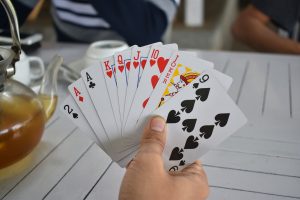Asking Questions and Finding Answers to Help You Schedule Better
Things taking longer than we expect them to. This is a topic of way too many conversations. Just in the last few days I’ve had this very discussion, in some form or another, with customers, subcontractors and family members. Not to mention it’s an ongoing dialog I have with myself.
Why is this such a common problem? Is there something wrong with my scheduling system or abilities? Is there a better way to manage my time? Am I trying to do too much? Is it just the way things are? I know this is a lot of questions, but asking questions is the only way to find answers.
I think one reason we don’t ask questions, is the amount of time it takes to find answers. If it isn’t a simple answer that jumps out in front of you, it’s easier to just let things keep going the way they are. I’m behind, I don’t have time to look for answers to questions.
Here are 5 answers that you won’t have to look for:
- Find the balance of accuracy and urgency –
 This is a big struggle that I have when scheduling. I know that I’m deadline oriented. If I allow two hours to do something it will most likely take twice that long. If I allow four hours, it reduces the level of urgency and I will
This is a big struggle that I have when scheduling. I know that I’m deadline oriented. If I allow two hours to do something it will most likely take twice that long. If I allow four hours, it reduces the level of urgency and I will  procrastinate. Something else will take its place. I’ve figured out that If I schedule myself short on time, I focus better, and the increased urgency will get it done faster. Figuring out your balance of accuracy and urgency can be tricky but is critical.
procrastinate. Something else will take its place. I’ve figured out that If I schedule myself short on time, I focus better, and the increased urgency will get it done faster. Figuring out your balance of accuracy and urgency can be tricky but is critical.
- Give as much importance to my schedule with myself as to others –
![]() When I put things on the calendar that are for myself, I tend to be more lenient. This is different than when I have a meeting scheduled with someone else. If I am going to honor God and others, I need to also honor myself. This is hard for me but is one of those areas where I need to be more accountable. If I hope to spend my time efficiently, I need to be realistic when scheduling with myself and honor it.
When I put things on the calendar that are for myself, I tend to be more lenient. This is different than when I have a meeting scheduled with someone else. If I am going to honor God and others, I need to also honor myself. This is hard for me but is one of those areas where I need to be more accountable. If I hope to spend my time efficiently, I need to be realistic when scheduling with myself and honor it.
- Stop trying to do too many things –
But there are so many important things that need to be done. If I don’t do them, they won’t get done or they won’t be done right. This  tendency of trying to do too many things has always been a characteristic that I have been proud of. This is what movers and shakers do, right. Being a micro-manager doesn’t help either. There are just too many pieces to put together by myself. I need some clarity of focus on what my time is best spent on and stop trying to do everything if I want to be the best steward of my time.
tendency of trying to do too many things has always been a characteristic that I have been proud of. This is what movers and shakers do, right. Being a micro-manager doesn’t help either. There are just too many pieces to put together by myself. I need some clarity of focus on what my time is best spent on and stop trying to do everything if I want to be the best steward of my time.
- Take in to account the number of things out of my control –
The bigger the project being scheduled, the more things there are to schedule. One small delay can have a snowball effect by pushing more and more things farther and farther back. There needs to be some margin scheduled in to cover these delays. The difficult part is to not let the margins become areas of wasted time. It is critical to communicate clearly to those involved the importance of being on schedule. I use two different schedules with projects. One with the customer and one with the producers.
- Plan for unforeseen things that interrupt the plan –
There are always things that can’t be planned for. It doesn’t matter how well you plan if something breaks down or there’s an accident. The priority and focus can change quickly. This is a thing that is also out of my control. The difference in the two is the frequency and the level of disruption. We can only plan for these things to a certain point. It is more about the awareness that it can happen and being ready to deal with it the best we can when it does.

The key to unlocking the door to better scheduling and planning is self-awareness. It’s about knowing who you are and asking questions. I know that I’m a recovering perfectionist and my level of expectation is high. I know that this makes things take longer. I also know that if I want to build the best business and the best me, I must be willing to ask questions, find answers and put those answers to use. It all comes down to me and my willingness to make the necessary decisions.
What are some answers to scheduling questions that you’ve found?




 There is a lot that goes into building something. I have written about how building and operating a business can be like standing in the shadow of an overwhelming mountain and the importance of having a
There is a lot that goes into building something. I have written about how building and operating a business can be like standing in the shadow of an overwhelming mountain and the importance of having a 


 more things that need to be addressed to provide customers with a WOW rather than a woops experience.
more things that need to be addressed to provide customers with a WOW rather than a woops experience.
 In 2014 we did the
In 2014 we did the






 There is something natural about the act of creating, whatever the creation may be. This is something that was implanted in us at our conception. This is God’s DNA in us. We are created in His image,
There is something natural about the act of creating, whatever the creation may be. This is something that was implanted in us at our conception. This is God’s DNA in us. We are created in His image, 

 morning and conclude by spending the rest of the day, into the evening, playing games, eating and enjoying time with family. This doesn’t mean that I don’t enjoy all the other holidays, because I do. These three are just my favorites.
morning and conclude by spending the rest of the day, into the evening, playing games, eating and enjoying time with family. This doesn’t mean that I don’t enjoy all the other holidays, because I do. These three are just my favorites.
 Having been on both sides of the employee/owner relationship I can tell you that both work hard to achieve success. If all involved work hard together toward the same goal everybody wins. It is easy to look at other people and think they have it easy, but rarely is that the case.
Having been on both sides of the employee/owner relationship I can tell you that both work hard to achieve success. If all involved work hard together toward the same goal everybody wins. It is easy to look at other people and think they have it easy, but rarely is that the case.


 Moving forward with the first next step I must narrowly clarify excellent delegation.
Moving forward with the first next step I must narrowly clarify excellent delegation.




 One of the discussions about this had to do with someone who was self-employed. This person’s family couldn’t understand why they couldn’t do some additional things around the house. They had extra time because, after all, they were self-employed. Another conversation was with a business owner. They said they hoped they wouldn’t need to work on the upcoming Father’s Day, because they had already worked the last fourteen days. Then he said, “but if that’s what it takes, I guess I will”.
One of the discussions about this had to do with someone who was self-employed. This person’s family couldn’t understand why they couldn’t do some additional things around the house. They had extra time because, after all, they were self-employed. Another conversation was with a business owner. They said they hoped they wouldn’t need to work on the upcoming Father’s Day, because they had already worked the last fourteen days. Then he said, “but if that’s what it takes, I guess I will”. We all know that there is a fixed amount of time so why is it that we’re always over filling it? Even less ambitious and less driven people complain about not having enough time to do everything they want to.
We all know that there is a fixed amount of time so why is it that we’re always over filling it? Even less ambitious and less driven people complain about not having enough time to do everything they want to. We have the power within our-SELF to take control of this.
We have the power within our-SELF to take control of this.
 What if there’s an underground water line leaking in your back yard. You can see that spot where the grass is green in an otherwise brown lawn. The water bill is more than ever before and getting bigger each month. That doesn’t matter, the prospect of getting your shovel out of the tool shed and digging is more than you can bear to think about. So, you put it off and pretend that it’s not a problem.
What if there’s an underground water line leaking in your back yard. You can see that spot where the grass is green in an otherwise brown lawn. The water bill is more than ever before and getting bigger each month. That doesn’t matter, the prospect of getting your shovel out of the tool shed and digging is more than you can bear to think about. So, you put it off and pretend that it’s not a problem. The same thing is true about the Savings Transfer Sheet. If you will take the time to get it out of the tool box, spend some time learning how to use it and use it regularly, it will make a significant difference in stopping your financial leaks.
The same thing is true about the Savings Transfer Sheet. If you will take the time to get it out of the tool box, spend some time learning how to use it and use it regularly, it will make a significant difference in stopping your financial leaks.